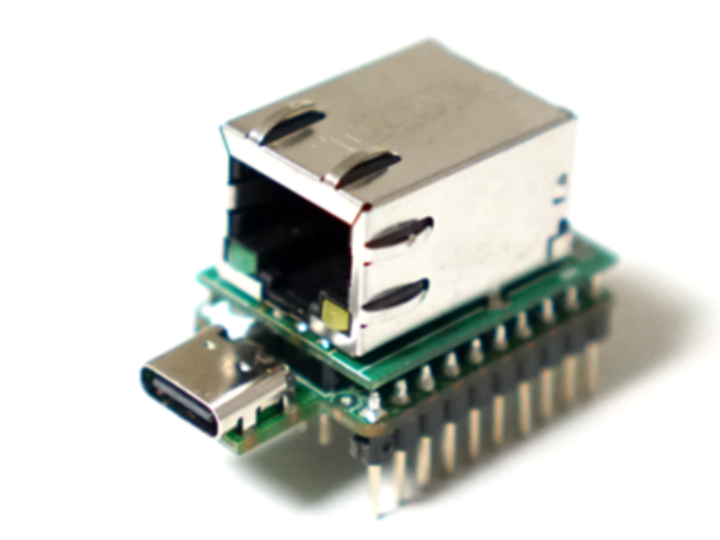RP2040 + W6100 Mini Board
Custom RP2040 mini-board couples Raspberry Pi’s $1 MCU with WIZnet W6100 Ethernet for a palm-sized, IPv4/IPv6-ready IoT platform offering single-chip TCP/IP

Project Overview
RP2040’s budget-friendly horsepower meets WIZnet’s feature-rich W6100 to create an ultra-small Ethernet node ideal for embedded web servers, gateways, or industrial sensors. Double-sided component placement and a trimmed 10-pin header shrink the board to roughly the same size as earlier single-chip W6100 SSM modules, yet it now hosts a full MCU. Engineer's LAB
Key Features
Full IPv4/IPv6 stack in silicon – zero CPU overhead for TCP/UDP, plus MAC+PHY inside W6100.
33 MHz SPI on RP2040 – sustains high-throughput DMA transfers (configurable). Engineer's LAB
Tiny 2-layer PCB – front/back placement, compact QSPI flash, 10-pin SSM footprint. Engineer's LAB
Hardware Setup
W6100’s SPI, INT, and RST lines map to RP2040 SPI0 (GPIO 16-19), leaving the second core free for user tasks. The 10-pin header exposes 3V3, GND, SPI, UART, and SWD, simplifying plug-in prototyping.
Software Implementation
Core Functionality
Network Architecture
The RP2040 communicates with W6100 over SPI; W6100 handles all Ethernet framing and protocol logic, surfacing a BSD-style socket API via the library. Users can stack additional sensors on I²C/SPI1 while core Ethernet traffic streams independently.
Performance Results
Early DHCP + ping tests show immediate link-up and <1 ms round-trip on a 100 Mbps LAN; iperf stress-tests are planned once final firmware is in place.
Lessons Learned
Shared PCB real-estate across both sides drastically cuts board size without compromising signal integrity.
Keeping W6100 on RP2040 SPI0 avoids pin-mux headaches and lets the Pico SDK example code run unmodified.
Future Improvements
Add PoE option via isolated 48 V module.
Break-out USB-C for power and serial in the same connector.
Publish KiCad sources and BOM for community spin-offs.
Challenges & Solutions
| Challenge | Solution |
|---|---|
| Routing 100 Ω differential pairs on a 20 mm board | Swapped to compact MagJack daughtercard; kept short stub lengths |
| Limited pin count | 10-pin SSM header chosen; multiplexed SWD & UART via jumpers |
| Flash footprint | Selected 2 MB W25Q16JV in USON-8 package |
